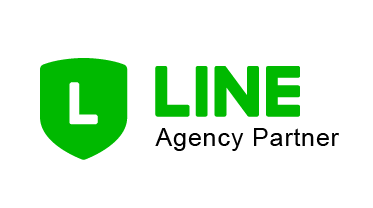Best Healthcare SEO Strategies
Healthcare SEO (or medical SEO) refers to search engine optimization (SEO) efforts for healthcare businesses, including healthcare facilities or related companies. The main purpose is to improve your online presence.
The objective may vary depending on your company type, but generally, SEO aims to gain web traffic for your medical practice or any other healthcare company. Hopefully, this translates to increased visits from patients and customers via search engines.

The main purpose of healthcare SEO is to improve its online presence.
Source: Pexels.com
SEO can benefit any competitive business with an online presence – and when it comes to a saturated industry like medical and healthcare, SEO can help you make your mark and build a solid reputation.
Check out our article on the benefits of SEO and why your business should rank No. 1 on Google.
Table of Contents
Why is SEO Important for the Healthcare Industry?
In short, a solid medical SEO strategy can also help you get new patients, leads, sales, and revenue. According to a survey by Software Advice, 71% of respondents look to online reviews first before they choose a doctor, and 43% of respondents would prefer an out-of-network provider if they had better reviews than an in-network provider. This shows that the sustainability of your healthcare business depends on having a positive reputation, especially online.
You can also add to your authority or credibility by offering informative blog content on your site that answers your patients’ burning medical queries – this builds trust in your company.
Besides that, SEO allows you to compete with larger businesses without having to fork out a big budget for paid ads. It generally leads to an increase in traffic in 90 days. Still, some steps require you to consult with a dedicated agency or specialised healthcare SEO experts.

SEO strategies can also vary depending on the nature of your healthcare company.
Source: Pexels.com
SEO strategies can also vary depending on the nature of your healthcare company – after all, healthcare covers both business-to-consumer (B2C) and business-to-business (B2B) audiences.
However, we trust you’re here to take the extra learning time. You can kickstart your SEO growth using the following steps:
Ten Steps to Healthcare Search Engine Optimization (SEO)
Medical Website Health Check
Have you ever used a website with a confusing sitemap or slow-loading pages? More often than not, you end up clicking off. It’s safe to assume that potential patients may leave your site if it’s slow to load or too complicated to use. Technical issues can lead to a poor user experience and impact your SEO.
Conducting a medical website health check can help you uncover issues that are making your site ineffective, so you can offset some of these errors. You should check if your site is indexed on Google Search Console. If you’re not indexing, none of your pages will rank on Google’s search engine results pages (SERPs).
This can get technical, so you should engage with web developers or expert SEO specialists.
Once you’ve set up your GSC, you can access reports about your medical website’s Core Web Vitals – a series of metrics that measure certain things about your website, like load time. These reports can give you insight into the pages of your website that require optimisation.
You should use a site audit tool to get recommendations on how to fix technical glitches and issues affecting your site’s health and usability. Better yet, leave it to professionals like our experts at Primal Malaysia.
This leads us to the next point…
Site Architecture for UX

UX heavily depends on your site architecture.
Source: Pexels.com
User experience (UX) can be one of the determining factors motivating a patient to book an appointment or purchase your product through your site. UX heavily depends on your site architecture – how are you structuring the pages and categories that make up your site?
Poor architecture causes visitors to get confused, so having a clear one is one of the best ways to encourage a positive UX. This means making your site easy to navigate with good accessibility to all of your main pages – the best practice is to make sure every page is no more than 3 subcategories deep (click depth).
This makes it easier for online visitors and search engine crawlers – if it’s too hard to get to a page, crawlers won’t index it on Google SERPs.
Use Reviews
As mentioned, most patients seeking healthcare services often depend on online reviews and do their own research before deciding on a practice to visit.
Therefore, you should utilise business reviews on your social media pages and Google Business Profile to increase your credibility and build customer trust.
You can encourage patients to leave honest reviews by having signs or stickers at your patient lobbies or sending a follow-up email or text after their appointments. Make it as easy as possible for them to leave a review, so make sure any links you send are working, your landing page loads quickly, and the submission form is short, straightforward, and digestible.
Create Helpful Content Based on Keywords
By now, you’d know that content is the pinnacle of effective on-site SEO. Trying to upgrade all the content on your site can get overwhelming, but you can start with your core pages. For healthcare websites, these could be your homepage, locations, about us, billing, contact information, and services.
Remember to include your target keywords while being informative and educational for your web visitors. It may also be useful to look through your top competitors’ content to see what keywords you could include. For more on keyword research, you can check out our detailed article.
Set Up A Healthcare Blog

For healthcare sites in the medical industry, you must take extra care to ensure the content you provide is helpful and accurate.
Source: Pexels.com
Creating optimised content based on user queries can help boost your site in search engines and provide information to potential patients.
For healthcare sites in the medical industry, you must take extra care to ensure the content you provide is helpful and accurate. This is because Google’s aim is to provide the best solution that is correct and comes from an authoritative source.
Google will penalise websites with content that can harm a person’s health. Therefore, your healthcare blog must demonstrate E-E-A-T (Experience, Expertise, Authoritativeness and Trustworthiness), so make sure you double-check your blog content with an expert in your niche.
Optimise HTML Tags
HTML tags give your medical website structure, both technically and visually – this allows people and search engines to understand your content. Make sure you prepare content with the main keywords in your titles and <h1> tag, while secondary, related keywords (the ones with less volume) should go in the <h2> tag and <h3> tag.

You should also add your main keywords to other tags on your site, such as the title tag, meta description, and alt tags.
Source: https://www.reliablesoft.net/h1-tag/
You should also add your main keywords to other tags on your site, such as the title tag, meta description, and image alt tags. Balance is key, so avoid keyword stuffing where words don’t fit – ultimately, Google emphasises content that is helpful and easy to understand.
Building page interlinks
Make sure you build interlinks from one page of your site to another. Internal linking like this can prevent pages from being left alone or “orphaned”. Find opportunities to share traffic from a well-visited page to other pages on your site to avoid this situation.
Utilise Local SEO

Local SEO refers to optimising your on-page and off-page SEO to rank higher for searches in a particular area.
Source: Pexels.com.
Local SEO refers to optimising your on-page and off-page SEO to rank higher for searches in a specific area. Facilities with a physical location can significantly benefit from optimising your site for local search.
This includes updating your contact information (the name of your business, address, phone number, or NAP for short) to make it consistent across the web. You can also list this information in local directories like Yelp or Zocdoc.
By optimising your website to include location keywords such as “hospitals in Kuala Lumpur” or “clinics in Puchong”, Google will also display your facility for keywords like “doctor near me” or “blood test near me” for users in the area.
Build Backlinks
Backlinks are links from one website to another. Building backlinks as the owner of a medical or healthcare site can showcase your authority in your field. Some ways you can do this are to produce medical research, observations, think-pieces, or reports, as these are likely to get backlinks from other blogs and sites.
You can also research who is linking to your competitor’s sites and contact them to see if they’d consider giving you a link too. Use tools like the Backlink Gap to find these opportunities. You can type in your website to find domains that link to competitors’ sites, so you can subsequently contact the site for a backlink too.
Read more on what link-building is and good vs bad link-building strategies here.
Add Schema for Healthcare Business Details
Schema is a syntax you can add to your site, so Google will show more details when your website appears in the SERPs. If used properly, it can look like this:

Schema is a syntax you can add to your site, so Google will show more details when your website appears in the SERPs.
Source: https://www.schemaapp.com/schema-markup/value-of-schema-markup-to-healthcare-organizations/
Some of the extra tidbits you can display with the help of schema mark-up include:
- Medical speciality
- Medical procedures
- Location
- Reviews
- Telephone number
To do this, you need to adjust the code on your website – it’s a safer bet (and also much more accessible) if you partner with a reputable SEO agency in Kuala Lumpur like Primal Malaysia for this.
Track Your Results and Maintain Growth
So you’ve implemented most of the above tips. Now you need patience. SEO is a waiting game – the only way to ensure your efforts are working is by closely monitoring results. We recommend using Google Analytics for this. You can optimise your healthcare and medical sites for even greater ROI based on your results!

SEO is a waiting game – the only way to ensure your efforts are working is by closely monitoring results.
Source: Pexels.com
At Primal digital marketing agency Kuala Lumpur, our SEO experts have a proven track record in medical and healthcare SEO with a long list of clients in the industry.
Our award-winning team can help you translate your marketing strategies into tangible results like increased sales and revenue.
Ready to see what we can do? Contact us for more!
















Join the discussion - 0 Comment